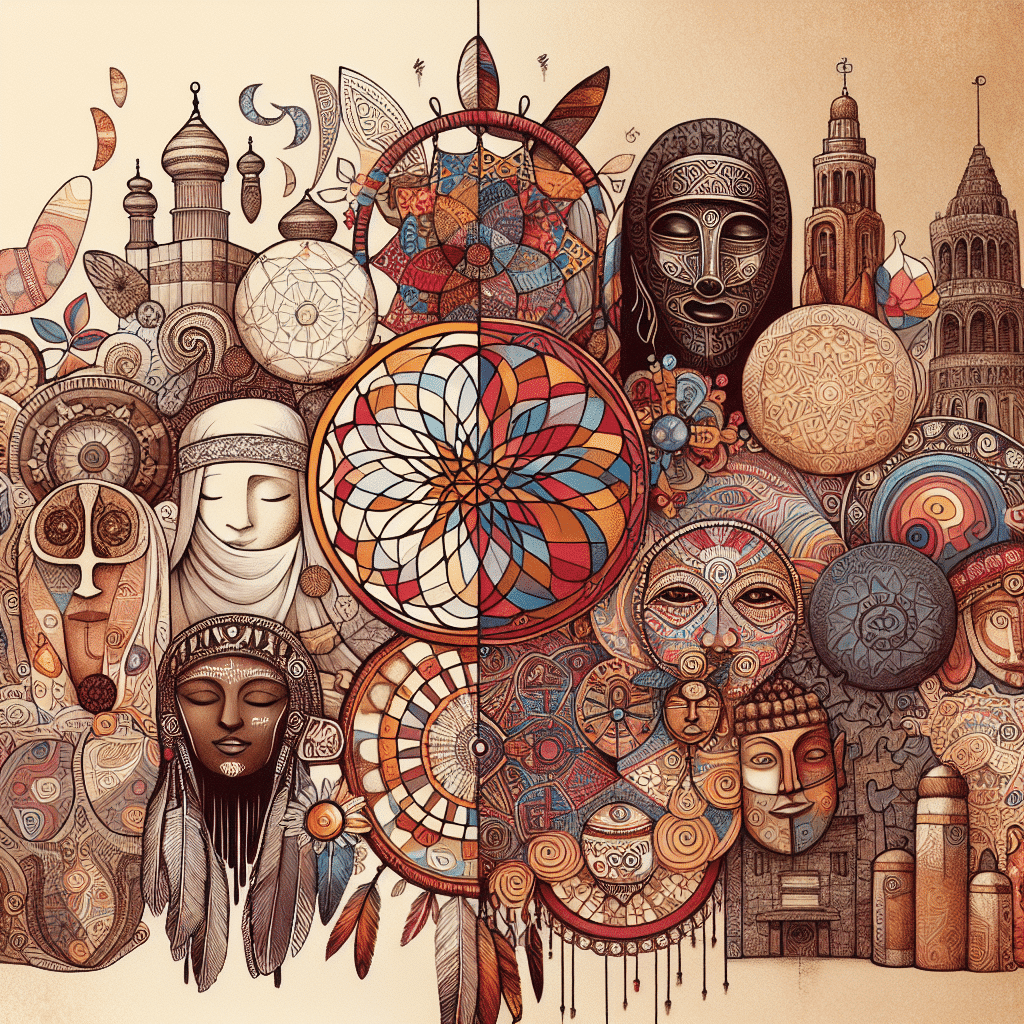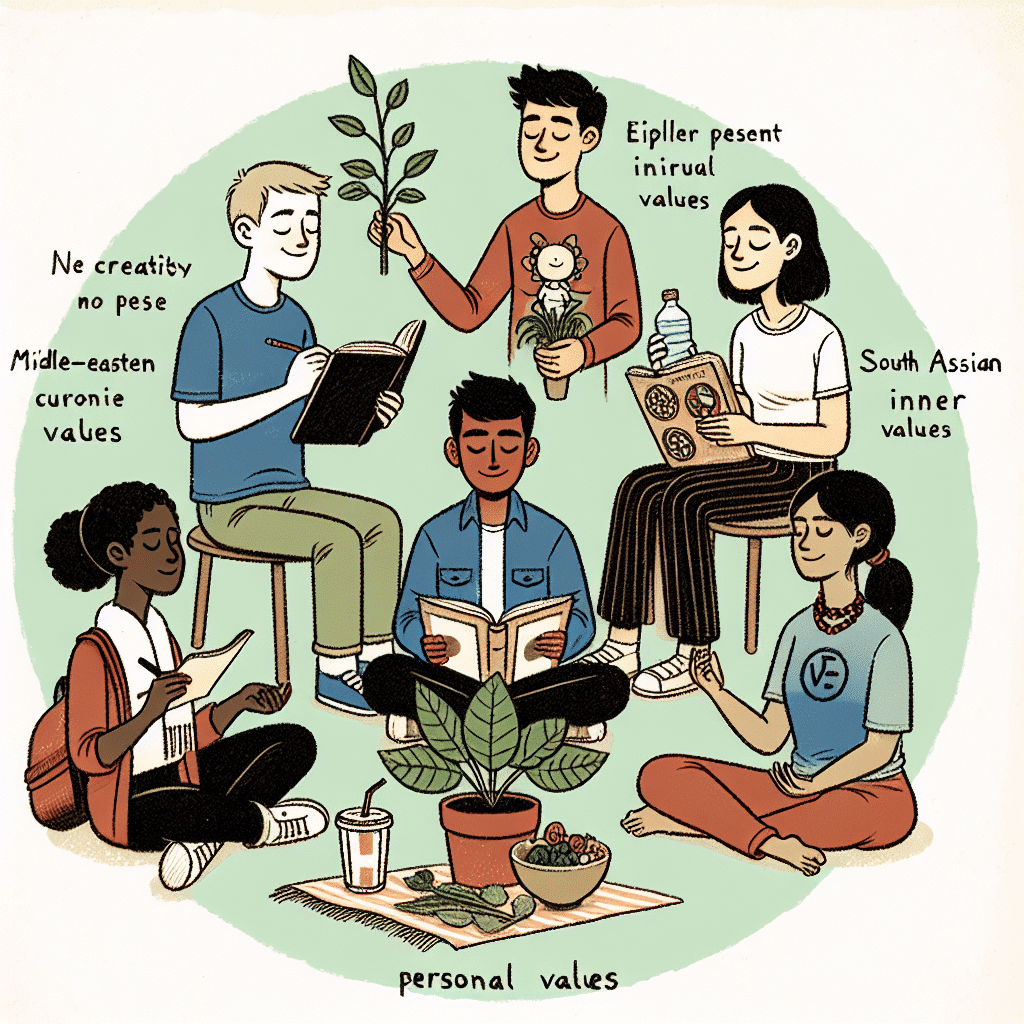
Defining spirituality and transculturalism
Spirituality is a deeply personal experience that involves connecting with something greater than oneself. It encompasses beliefs, practices, rituals, and values that give meaning and purpose to life. Transculturalism, on the other hand, refers to the blending and exchange of cultural norms, practices, and beliefs across different societies. When we explore the transcultural aspects of spirituality, we delve into how spiritual beliefs and practices transcend cultural boundaries and influence individuals from diverse backgrounds. This intersection offers a rich tapestry of traditions, philosophies, and experiences that contribute to the global landscape of spirituality.
Historical perspectives on transcultural spirituality
Historically, transcultural spirituality has been a fundamental part of human civilization, with numerous ancient societies recognizing the interconnectedness of various spiritual beliefs and practices. The Silk Road, for example, served as a major trade route that not only facilitated the exchange of goods but also of ideas, including spiritual beliefs. This led to the blending of different religious and philosophical traditions, creating a rich tapestry of spiritual practices that transcended cultural boundaries.
In ancient Egypt, the concept of Ma’at emphasized balance and harmony within oneself and with the wider world, reflecting a deep spiritual connection to the universe. Similarly, in India, the teachings of Yoga and meditation were shared with travelers from different cultures, influencing the development of spiritual practices worldwide.
During the European Renaissance, the revival of classical knowledge and the exploration of new lands sparked a greater interest in transcultural spirituality. The encounter between European explorers and indigenous peoples in the Americas, Africa, and Asia led to the integration of diverse spiritual practices into mainstream European thought. This period saw the spread of ideas such as syncretism, the blending of different religious beliefs, and the study of comparative religion, highlighting the similarities and differences between cultures.
Moreover, the concept of universal spirituality gained prominence during the Enlightenment era, as thinkers such as Voltaire, Rousseau, and Kant advocated for the idea of a common moral and ethical foundation that transcended cultural boundaries. This notion of a shared spiritual essence among all humanity laid the groundwork for a more inclusive and tolerant worldview.
Overall, historical perspectives on transcultural spirituality illustrate the fluid nature of human beliefs and the capacity for spiritual practices to evolve and adapt across different cultures. By examining the interconnectedness of various faith traditions throughout history, we can gain a deeper understanding of the universal aspects of spirituality that bind us all together.
Influence of religion on transcultural spirituality
Religion has played a significant role in shaping transcultural spirituality throughout history. Different religious traditions have introduced unique beliefs, rituals, and practices that have been adopted by individuals and communities across cultural boundaries. These religious influences have contributed to the rich tapestry of transcultural spirituality that exists today.
Christianity:
Christianity, one of the world’s largest religions, has been a major influence on transcultural spirituality. The spread of Christianity through missionary efforts has led to the adoption of Christian beliefs and practices in diverse cultural settings. The concept of universal love and compassion taught by Jesus Christ has resonated with people from various backgrounds, leading to the incorporation of Christian values into transcultural spiritual practices.
Islam:
Islam, another major world religion, has also played a significant role in shaping transcultural spirituality. The five pillars of Islam, which include beliefs such as prayer, fasting, and charity, have been embraced by Muslims around the world, transcending cultural boundaries. The teachings of the Quran and the example set by the Prophet Muhammad have influenced the spiritual practices of individuals from diverse cultural backgrounds.
Buddhism:
Buddhism, with its emphasis on mindfulness, meditation, and the pursuit of enlightenment, has had a profound impact on transcultural spirituality. The teachings of Siddhartha Gautama, the founder of Buddhism, have inspired individuals from different cultures to seek spiritual growth and inner peace through Buddhist practices. The principles of compassion, kindness, and non-attachment taught in Buddhism have resonated with people from various cultural backgrounds.
In conclusion, the influence of religion on transcultural spirituality is evident in the beliefs, rituals, and practices that have been adopted and adapted by individuals and communities around the world. The teachings of Christianity, Islam, Buddhism, and other religions have contributed to the diverse and inclusive nature of transcultural spirituality, offering individuals the opportunity to explore and connect with spiritual traditions from different cultures.

Contemporary expressions of transcultural spirituality
As globalization continues to break down barriers between cultures and societies, the concept of transcultural spirituality is becoming more prominent in our world today. People are increasingly drawing upon a diverse range of spiritual beliefs and practices from various traditions to create their own unique spiritual identities.
One prominent expression of transcultural spirituality is the blending of Eastern and Western philosophies and practices. For example, mindfulness meditation, rooted in Buddhism, has gained popularity in Western countries as a means of reducing stress and cultivating inner peace. This fusion of East and West reflects the interconnectedness of cultures and the universal quest for spiritual growth and self-discovery.
Integration of ancient and modern practices
Many individuals today are incorporating ancient spiritual practices into their modern lives, seeking guidance and inspiration from traditions that have stood the test of time. Practices such as yoga, tai chi, and shamanic healing are being embraced by people from all walks of life, regardless of their cultural background. This integration of ancient and modern practices reflects the human desire for deeper connection to the spiritual realm and a sense of belonging in a rapidly changing world.
Online communities and virtual spirituality
With the rise of technology and social media, transcultural spirituality has found a new platform for expression through online communities and virtual gatherings. People from different parts of the world can now connect with each other in real-time, sharing their spiritual experiences, insights, and practices. This virtual connection transcends physical boundaries and allows individuals to explore and celebrate their shared humanity in a digital space.
In conclusion, contemporary expressions of transcultural spirituality are a reflection of the interconnectedness of our global community. By embracing diversity and seeking common ground in our spiritual beliefs and practices, we can foster a greater sense of unity and understanding among people of all cultures and backgrounds.
Challenges and opportunities for transcultural spiritual practices
Transcultural spiritual practices face a range of challenges and opportunities in today’s interconnected world. One of the key challenges is the tension between honoring cultural traditions and embracing diversity. As individuals from different cultural backgrounds come together to engage in spiritual practices, there may be conflicts or misunderstandings that arise due to differing beliefs, rituals, or customs. It is crucial for practitioners to navigate these differences with respect and openness in order to foster a sense of unity and understanding.
Another challenge is the impact of globalization on traditional spiritual practices. As cultures interact and exchange ideas more freely, there is a risk of cultural appropriation or dilution of spiritual traditions. It is essential for practitioners to be mindful of the origins and meanings behind spiritual practices to ensure that they are practiced authentically and respectfully.
Opportunities for transcultural spiritual practices
Despite these challenges, there are also numerous opportunities for transcultural spiritual practices to flourish in today’s world. One opportunity lies in the potential for spiritual practices to promote intercultural dialogue and understanding. By coming together to engage in shared rituals or experiences, individuals from diverse cultural backgrounds can learn from one another and cultivate a sense of unity and connection.
Furthermore, transcultural spiritual practices have the potential to foster a sense of belonging and community among individuals who may feel marginalized or isolated in mainstream society. By creating inclusive spaces where individuals can come together to explore their spirituality in a multicultural context, transcultural spiritual practices can help to bridge divides and build networks of support and mutual respect.
In conclusion, while transcultural spiritual practices may face challenges in navigating cultural differences and preserving authenticity, they also present valuable opportunities for promoting mutual understanding, inclusivity, and belonging. By embracing diversity and honoring cultural traditions, practitioners of transcultural spirituality can create meaningful connections and enrich their spiritual journeys in a multicultural world.
 ## Conclusion
## Conclusion
In conclusion, transcultural aspects of spirituality encompass the blending of diverse cultural beliefs, practices, and traditions that shape individuals’ spiritual experiences. The historical evolution of transcultural spirituality demonstrates the complex interchange between different cultures and religions. While religion plays a significant role in shaping transcultural spirituality, contemporary expressions highlight the fluidity and adaptability of spiritual beliefs across cultures. Despite challenges such as cultural appropriation and misunderstandings, there are opportunities for mutual understanding, respect, and growth through transcultural spiritual practices. Ultimately, transcultural spirituality underscores the universal and interconnected nature of spiritual experiences beyond cultural boundaries.






